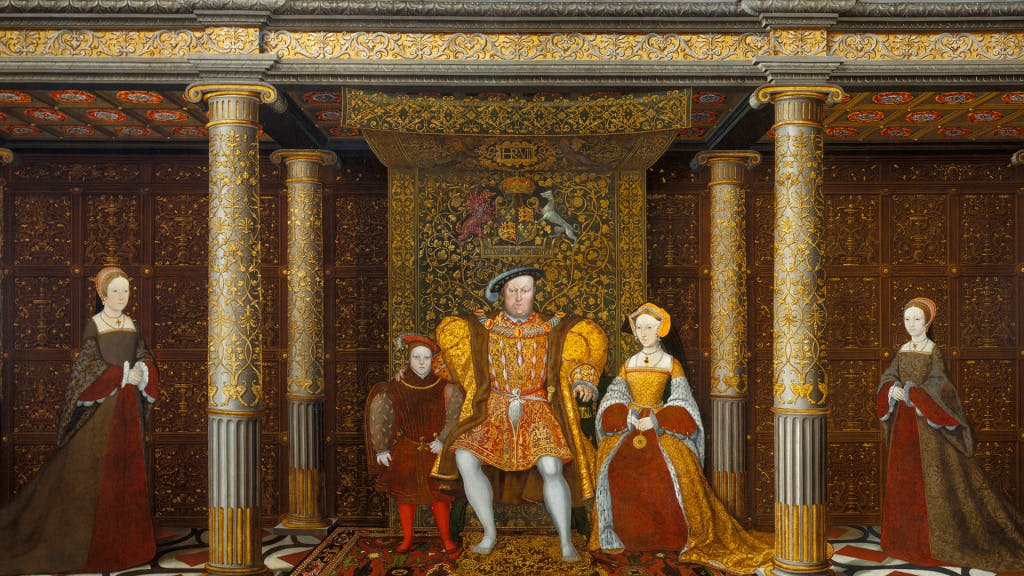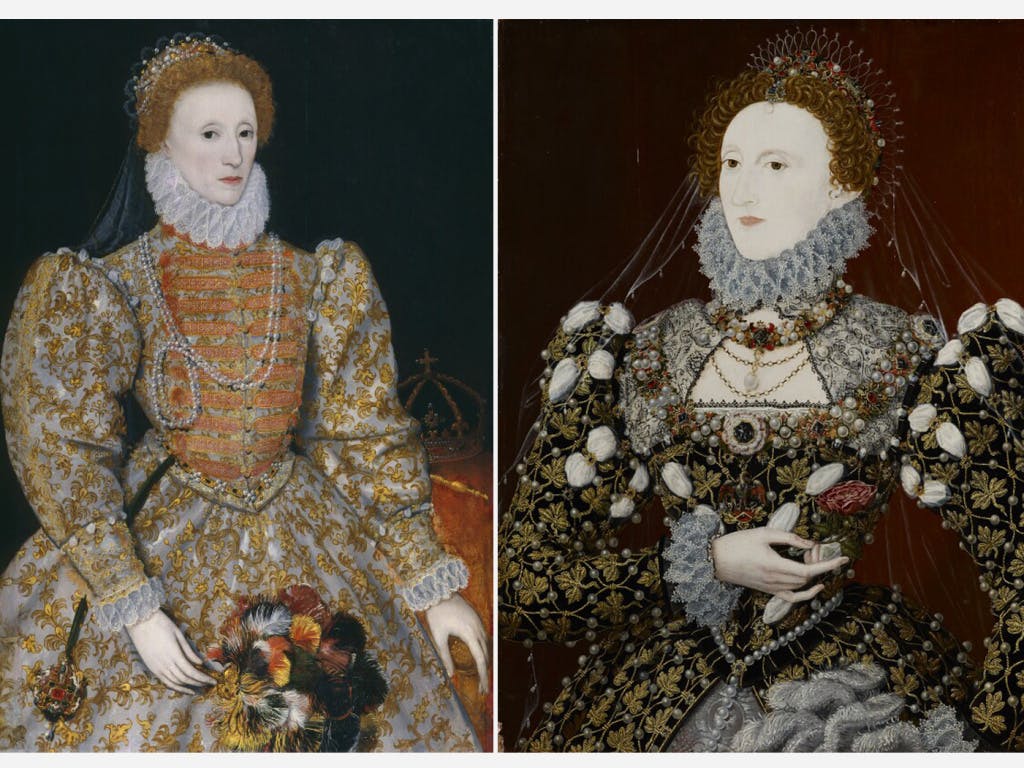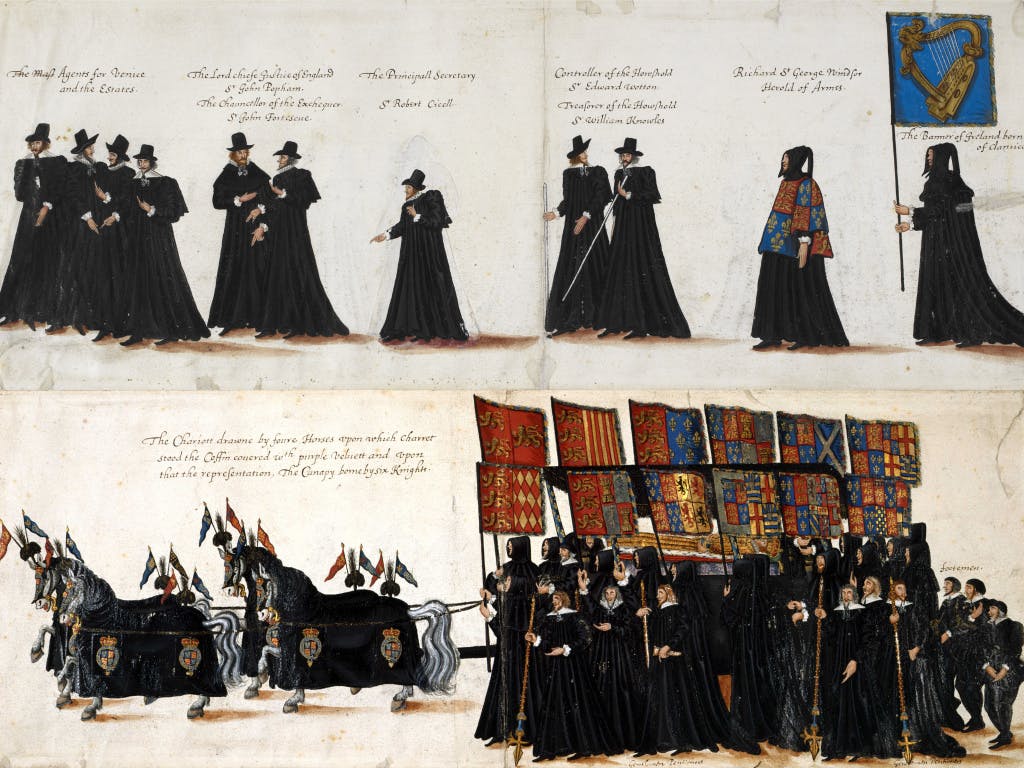
From Tower prisoner to English Queen
Queen Elizabeth I was the last monarch of the Tudor dynasty, which ruled England between 1485 and 1603. The daughter of Henry VIII and Anne Boleyn, Elizabeth became Queen in 1558 aged 25, at a time of political crisis. The 'Virgin Queen' never married, but instead pledged her body to England itself.
Elizabeth’s path to the throne was by no means smooth. After her mother was executed at the Tower of London, the young Princess was declared illegitimate. The reigns of her brother, Edward VI and her older sister Mary I, saw England beset by religious conflict and impoverished by war.
Elizabeth was imprisoned in the Tower of London, and held under house arrest at Hampton Court Palace, on suspicion of plotting against Mary: this was a Tudor dynasty at war with itself. What would happen next?
Header image: Queen Elizabeth I, 'The Rainbow Portrait' (detail), by Isaac Oliver, c1600. Reproduced by permission of the Marquess of Salisbury, Hatfield House
Image: Elizabeth I in her coronation robes, a copy of about 1600 of a lost original painting. © National Portrait Gallery, London
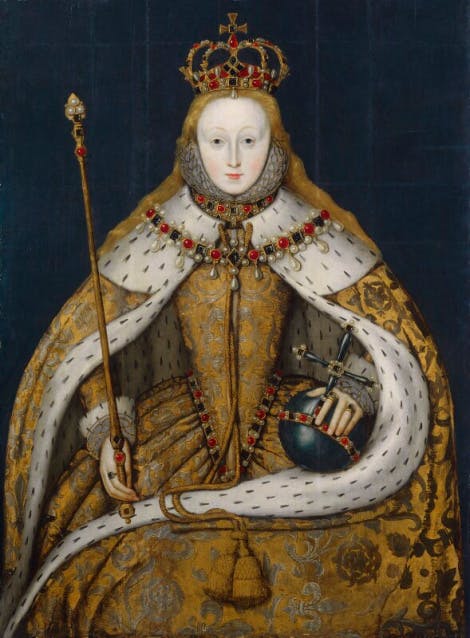
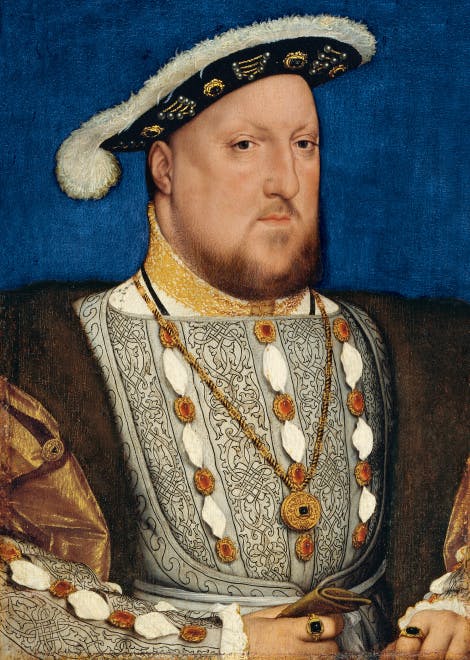
The birth of Elizabeth I
The future Elizabeth I was born at Greenwich Palace on 7 September 1533. Her arrival was a disappointment for her father: Henry VIII craved a son and heir to ensure the future of the Tudor dynasty.
The celebrations at court were muted, ‘very cold and disagreeable … and there has been no thought of having the bonfires and rejoicings usual in such cases’, according to the Imperial Ambassador Eustace Chapuys. The official letters sent out to announce Elizabeth's birth were corrected at the last minute, to change the word ‘Prince’ to ‘Princess’.
Henry’s enemies believed that the birth of a daughter was divine punishment for the King’s controversial divorce from his first wife, Katherine of Aragon.
Image: Henry VIII, by Hans Holbein the Younger, c1537, © Museo Nacional Thyssen-Bornemisza, Madrid.
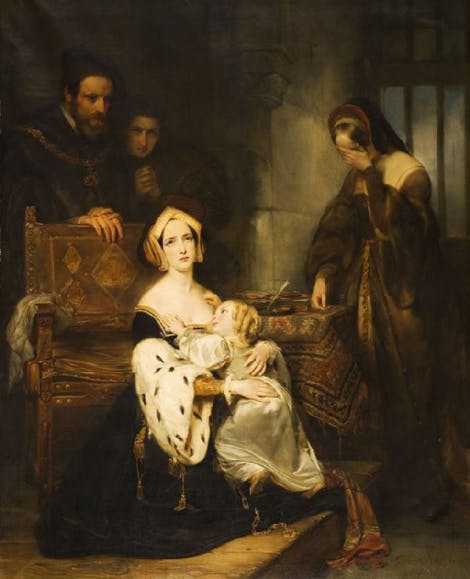
Execution of Anne Boleyn
Elizabeth was still only two years old when her mother was executed for treason.
Anne Boleyn’s fate meant that the little girl was no longer a princess, declared illegitimate and kept out of the way, living with a small entourage at the royal manor of Hatfield House in Hertfordshire.
The ‘Lady Elizabeth’ returned to court in 1537, to celebrate the birth of her half-brother Edward – a son, finally, for Henry VIII, with his new wife Jane Seymour.
At Edward’s extravagant christening at Hampton Court Palace, Elizabeth took her place in the procession to the Chapel, carrying her brother’s chrisom, the ceremonial baptism cloth.
Image: Anne Boleyn saying a final farewell to her daughter Elizabeth, in an imagined scene painted much later by Gustaaf Wappers, 1838, © Shunck Collection, GH63.08
Lady Elizabeth's education
Back at Hatfield, and despite her illegitimacy, the King appointed tutors to manage his daughter’s education. Elizabeth excelled, learning at least five languages (French, Italian, Spanish, Latin and Flemish) under the expert guidance of humanist scholars like Roger Ascham and John Cheke.
Image (below): Portrait of Elizabeth, aged 13, attributed to William Scrots, c1546. The future queen is depicted as a paragon of Renaissance elegance, learning and virtue. Royal Collection Trust / © Her Majesty Queen Elizabeth II 2019, RCT 404444
Did you know?
Later in life, Elizabeth learned Scottish, Irish and even Cornish.
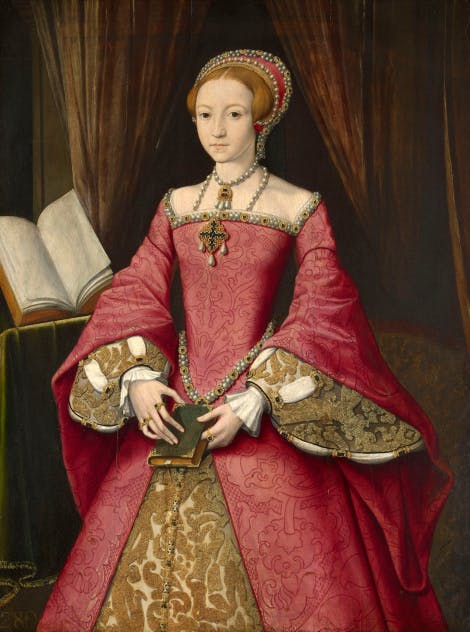
Her mind is no womanly weakness and her perseverance is equal to that of a man... She delights as much in music as she is skilful in it.
Princess Elizabeth's tutor, Roger Ascham in 1548
Elizabeth's return to court
After Henry VIII’s final marriage to Katherine Parr in 1543, the King, conscious of his failing health and encouraged by Katherine, sought a more permanent reconciliation with his daughters Elizabeth and Mary.
Both were included once again in the line of succession.
The young woman with her father’s red hair and (for those who dared to remember) her mother’s dark eyes was a remarkable presence at court.
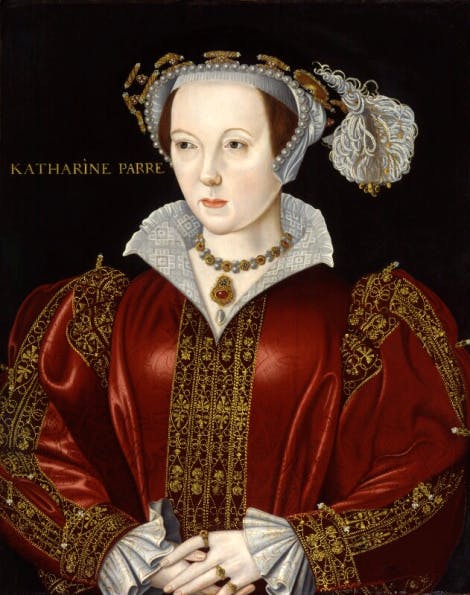
Elizabeth and Katherine Parr
Katherine Parr seems to have exerted a strong and positive influence over Elizabeth at this critical period of her life. The Queen encouraged Elizabeth's learning and taught her about Protestant reform. She also read classical texts, including Cicero, and discovered the power of oratory. Elizabeth even translated Katherine's essay, ‘Prayers and Meditations’ – into Latin, Italian and French – and presented it to her father.
Even after Henry VIII’s death in 1547, this happy and fertile period of Elizabeth’s life continued. She was welcomed into Katherine’s home at Sudeley Castle, with her new husband Thomas Seymour; Seymour was uncle to the new King, Elizabeth's brother, Edward VI.
Image: Katherine Parr, by an unknown artist in the late 16th century, probably copied from a lost original portrait. © National Portrait Gallery, London
The Seymour Scandal
Thomas Seymour, Lord High Admiral, proved a poor choice of guardian for Elizabeth. Within days of joining his wife, Katherine Parr at Sudeley Castle, Elizabeth began to receive early-morning visits from the 38-year-old Seymour, who would appear in her room dressed in his nightclothes. Elizabeth was protected by her governess, Kat Ashley, who warned him off.
Thomas Seymour’s harassment of the 14-year-old Elizabeth became insidiously more dangerous. Katherine reportedly found Seymour alone in a room with Elizabeth, his arms around the Princess.
The Death of Katherine Parr
In the spring of 1548, Elizabeth was sent away. But later that year, Katherine died in childbirth, and Seymour renewed his attentions.
He perhaps saw Elizabeth as a means of acquiring power, but in January 1549 he was arrested for conspiring to kidnap the King, and his lecherous behaviour with Elizabeth was unmasked. Seymour was beheaded for treason two months after his arrest.

Princess Elizabeth Under Suspicion
Edward VI, suspicious of his sister’s involvement, sought answers. Elizabeth was less than forthcoming, admitting only that she knew of Seymour’s ambition, but that she had never encouraged him.
Sir Robert Tyrwhitt, charged with Elizabeth’s questioning, reported, 'I do see it in her face that she is guilty.' The young Princess would have to learn to mask her true feelings if she was to survive the tempestuous politics of Tudor England.
Image: Elizabeth had grown close to the new King, her brother Edward, but the Seymour affair strained their relationship. Edward VI (left), Royal Collection Trust/ (c) Her Majesty Queen Elizabeth II, RCIN 404747

Elizabeth and Mary I
If Edward had been suspicious of his sister’s behaviour, Elizabeth’s sister Mary I was doubly distrustful. After Edward’s early death in 1553, the two sisters rode into London together to celebrate Mary’s coronation. But the show of togetherness did not last long.
Mary’s controversial plans to marry Philip II of Spain, and to return England to the Roman Catholic church caused serious concern. Not only were the leading Protestant courtiers of Edward’s court facing arrest or worse, but many believed that Mary was placing England at risk of a Spanish take-over.
Elizabeth became the focus for treasonable plots against her sister. She spent much of Mary’s reign under house arrest in various royal palaces, including Hampton Court Palace.
Thomas Wyatt’s rebellion of 1554 implicated Elizabeth directly. She was arrested and sent to the Tower of London on 17 March.
Image: Mary I, by an unknown artist in the late 16th century, copied from an original portrait by Anthonis Mor, © National Portrait Gallery, London
Imprisonment at the Tower of London
On her arrest in 1554, Elizabeth wrote to Mary, imploring her to ignore 'evil persuasions' that would 'persuade not one sister against the other.'
Elizabeth’s imprisonment at the Tower of London was comfortable enough physically – she was allowed in the gardens and had four rooms in the old palace – but this was where her mother had spent her last days before her execution.
Within two months, Wyatt had been beheaded and the investigations stalled. No evidence could be found of Elizabeth’s involvement and she was released.
The New Queen Elizabeth I
Elizabeth received the news of her sister’s death at Hatfield on 17 November 1558. By tradition, she was seated under an ancient oak tree – a fitting setting for a Queen destined to establish an English ‘golden age’ perhaps. But in 1558, England’s future was uncertain.
The country was divided by religion and isolated in European politics, and the last years of Mary’s reign had seen failed military campaigns, food shortages, bitter winters and the return of the plague.
Elizabeth's Coronation
The new Queen's arrival at the Tower of London on the eve of her coronation reminded the optimistic and celebratory crowds of her previous imprisonment. The memories must also have resonated with Elizabeth, still only 25.
Her ceremonial procession through London on 14 January 1559 and the coronation ceremony the following day were choreographed performances designed to reinforce Elizabeth’s right to rule: her mother was, after all, a condemned traitor.
'Monstrous regiment of women'?
As Queen, Elizabeth I’s greatest difficulty was her sex. The Protestant revolution had done nothing to dispel the 16th-century view of women as ‘the weaker vessel’ (a phrase used in one of the first English Bibles).
The Scottish preacher John Knox had written an essay on the ‘monstrous regiment of women’, blaming them for most of the unrest and division of European politics. The brief reign of Mary I, Elizabeth’s sister, cursed by religious persecution and subservience to Spain, was, he claimed, resounding proof.
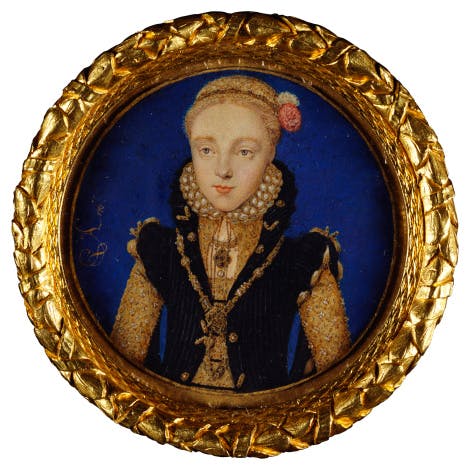
The 'Elizabethan Settlement'
But Elizabeth brought a more practical, more politically astute, form of queenship to the throne. She promised in her first speech as Queen to rule, 'by good advice and counsel'.
In 1559, the ‘Elizabethan Settlement’ offered a religious compromise, re-establishing the monarch’s supremacy over a ‘Church of England’ but retaining much Catholic ritual.
Mary’s councillors were retained at the heart of government, while Elizabeth did not rush into expensive foreign wars like her father. Instead, she cautiously promoted negotiation and peace.
Image: Portrait miniature of Elizabeth I, by an unknown artist, painted at the beginning of her reign. Royal Collection Trust/© Her Majesty Queen Elizabeth II 2019, RCIN 420944
Plans for Elizabeth I's marriage
Elizabeth's marriage was discussed in parliament as early as February 1559. The survival of the Tudor dynasty, and perhaps England’s Protestant future, demanded an heir.
Foreign Catholic royalty seemed out of the question, not least because of the memories of Mary I’s disastrous marriage with Philip of Spain. Suitably aristocratic and attractive English suitors were thin on the ground, with one exception.

Robert Dudley, Earl of Leicester
Robert Dudley, later Earl of Leicester, was charismatic and good-looking. He and Elizabeth even shared a past; they were childhood friends, and were both imprisoned at the Tower of London in 1554.
Dudley was now the Queen’s Master of the Horse, dancing partner at court, and perhaps even her lover. But he was also married…
Amy Robsart, Robert Dudley’s wife, fell to her death down a friend’s staircase in September 1560. She was terminally ill, and may have taken her own life. But the same court gossip that imagined Dudley’s adultery with the Queen now condemned him as his wife's assassin. For Elizabeth, marrying Dudley would have been a public relations disaster.
Instead, the two remained close friends and perhaps more; Dudley’s rooms adjoined Elizabeth's at court. Dudley was made a member of the Queen’s council in 1562 and created Earl of Leicester in 1564. The Queen was devastated when he died in 1588, and reportedly kept his last letter in a bedside treasure box for the rest of her life.
Image: Portrait of Robert Dudley, by an unknown artist, c1575, © National Portrait Gallery, London
Mary, Queen of Scots
With Elizabeth unmarried and without an heir, some looked to Elizabeth’s nearest relatives for a possible solution. Mary, Queen of Scots was the great-granddaughter of Henry VII of England and therefore Elizabeth’s distant cousin. She was also the Catholic ruler of an increasingly Protestant Scotland, a fellow Tudor queen but also the young widow of Francis II, King of France.
In 1568, Mary fled to England, her reputation destroyed by her involvement in her second husband’s murder, and her rule ended by a palace coup.
With the Scottish Queen now at her mercy, what was Elizabeth to do? Elizabeth was deeply torn, sympathetic but practical. Mary’s chaotic regime in Scotland was replaced by a Protestant regency under Mary’s infant son, James VI (the future James VI and I). For once, the ‘auld enemy’ north of the border was a potential ally, not a threat.
Catholic Plots Against Elizabeth
Mary was now an inconvenient guest in England, kept under house arrest in the north, where she found supporters amongst the old Catholic aristocracy. Mary became their radical and immediate solution to Elizabeth’s dynastic problem, but a plot to place her on the English throne was brutally suppressed by Elizabeth’s armies in 1569.
Elizabeth's Excommunication
In 1570, Pope Pius V excommunicated Elizabeth, encouraging Catholics everywhere to rise up and depose the heretic Queen. It was a turning point: the rest of Elizabeth’s reign was bedevilled by plots and rumours of Catholic rebellion.
In Europe, the 1570s saw some of the worst atrocities of the protracted fall-out of the Reformation. The St Bartholomew’s Day Massacre of 1572 saw Protestant Huguenot families slaughtered in their thousands, in an orgy of mob violence.
Keeping Peace in England
Back in England, Elizabeth and her council endeavoured to keep the country at peace.
William Cecil, Elizabeth’s chief minister, oversaw a mini industrial revolution: immigrant workers from the war-torn Netherlands expanded the skilled workforce, and England became a self-reliant manufacturer of all manner of goods, from tin to lace, glass to soap. Land enclosures created grazing for profitable flocks of sheep.
The Bishop of Salisbury declared that never was England 'better in worldly peace, in health and body, in abundance of victuals'.
Elizabeth and marriage: to marry or not to marry?
In 1566, parliament threatened to deny Elizabeth money before she settled the business of her marriage. She threw a royal tantrum, in protest at having her private affairs debated so openly.
By the 1570s, Elizabeth was in her forties; her last serious matrimonial option was the Duke of Anjou, the youngest brother of the French King, a political match to gain support against Spain. But the idea of a French marriage proved unpopular.
Elizabeth – and her council – had to face the reality that she would never marry.
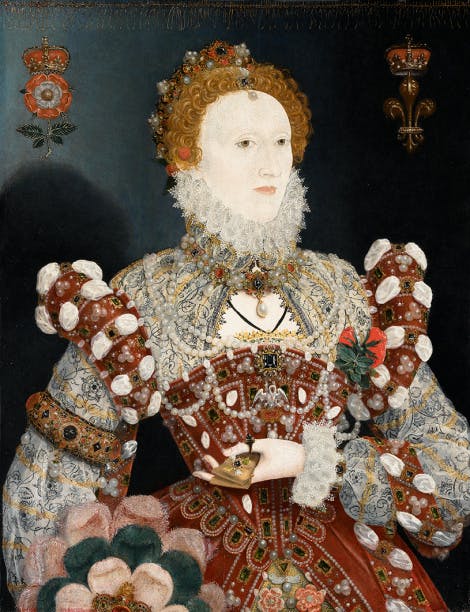
Elizabeth the Virgin Queen
Elizabeth did not marry and did not have any children. But, rather than cause unrest, the Queen’s image of virginity became an unlikely source of unity, a defiant symbol of her virtue and sacrifice.
Portraits of Elizabeth became loaded with symbolism borrowed from the Virgin Mary or the chaste classical goddess Diana, and – like a goddess – Elizabeth’s appearance in art remained ever-youthful.
Loyal supporters wore her image as a badge, courtiers gushed their admiration in poetry, and the wider country celebrated in festivals and pageants; Elizabeth was married to England.
Image: Portrait of Elizabeth I, by Nicholas Hilliard, c1573-5. The queen appears as an icon, bedecked in precious jewels and religious symbolism. The pelican brooch represents Elizabeth’s sacrifice: the mother pelican was believed to feed her own blood to her young. Presented to the Walker Art Gallery by Alderman E Peter Voues in 1945.
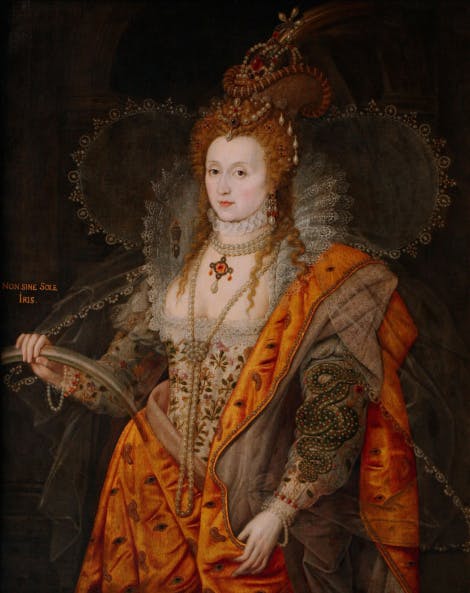
Gloriana, the immortal goddess
The fantastical costume and the ageless face in portraits of Elizabeth I create a dazzling impression of the ideal ‘Gloriana’ of Edmund Spenser’s ‘The Faerie Queene’, written between 1589-96.
In the ‘Rainbow Portrait’, The eyes and the ears on the Queen’s dress made clear that she saw everything, while Elizabeth was also the sun, giving life to the rainbow held in her right hand: only the Queen could ensure peace and prosperity.
Image: Portrait of Elizabeth I, by Isaac Oliver, the ‘Rainbow Portrait’ of c1600. Reproduced by permission of the Marquess of Salisbury, Hatfield House
Watch The Lost Dress of Elizabeth I
For years, an incredibly rare Tudor treasure lay tucked away in a church in the rural hamlet of Bacton.
Now, new research has uncovered that this is in fact part of a dress worn by someone of the highest nobility at the Elizabethan court. Evidence points directly to the wardrobe of Elizabeth I, making it the only known surviving example of Elizabeth's clothing.
Video Transcript of The Lost Dress of Elizabeth I
Follow along with an interactive transcript of The Lost Dress of Elizabeth I on YouTube. A link to open the transcript can be found in the description.
The Reign of Elizabeth I: A Golden Age?
Against the odds, Elizabeth’s personal bravery and charisma, mixed with a natural inclination to compromise rather than dictate, helped stabilise the country.
Elizabeth became a legend in her own lifetime, praised by poets and immortalised by artists as 'Gloriana', an immortal goddess sworn to protect a nation thriving in a cultural renaissance, the age of Shakespeare. But how much of this can possibly be true? Was Elizabeth's 44-year reign really a 'golden era' of English history?
Did you know?
At Hampton Court Palace, Elizabeth created a ‘Paradise Room’, decorated with precious metals and gems to dazzle visitors.
The Highs and Lows of the 'Golden Age'
Elizabeth's court literally dazzled with exotic costumes and jewellery. Courtiers and merchants, enriched by trade, built spectacular 'prodigy houses' to display their wealth, with wings devoted to the occasional royal visit. And when Elizabeth did come to stay, ludicrously expensive entertainments were staged in her honour.
Thomas Tallis and William Byrd led a Renaissance revolution in music, while the composer and musician John Dowland made the lute a popular accompaniment for all festivities.
William Shakespeare and Christopher Marlowe directed Elizabethan cultural confidence onto the stage, while Francis Drake and Walter Raleigh took Elizabethan ambition abroad.
Walter Raleigh sponsored attempts to establish English colonies in North America, named 'Virginia' after the Queen. Although Raleigh himself never went to Virginia, he did sail to South America to investigate the possibility of colonisation in Guyana and Venezuela. Francis Drake circumnavigated the globe between 1577-80, and Elizabethan England traded with Russia, Morocco and the Ottoman Empire.
John Hawkins and the Trade of Enslaved People
Elizabeth's reign is often celebrated for the Queen’s nurture of ambitious international trade. However, this policy had long-reaching and devastating consequences. Most famously, John Hawkins was the first Englishman known to engage in the transatlantic trade in enslaved people. He began trading in enslaved people early in Elizabeth’s reign and received the Queen’s support for a considerable time afterwards.
In 1562-3 Hawkins acquired at least 300 enslaved people from West Africa and sold them in the Spanish colony of Hispaniola (now Haiti and the Dominican Republic) in the Caribbean. Elizabeth I initially condemned Hawkins' actions, labelling them 'detestable'. Sadly, this condemnation did not last. The Queen was ultimately impressed by Hawkins’ profits and became a major investor in his future voyages. Elizabeth wrote letters to Spain in support of his endeavours and provided him with guns, supplies, and ships which sailed under her royal standard.
Elizabeth continued to favour John Hawkins long into her reign; he became an important English naval commander and served as Vice-Admiral during the Spanish Armada in 1588. He was knighted Sir John Hawkins, and his coat of arms included an image of an enslaved African man. While it would be 100 years before English merchants would traffic enslaved people in a systematic way, the seeds of that trade had been sown.
Elizabeth's Secret Service
Francis Walsingham, Elizabeth’s secretary-of-state, embodied the darker side of Elizabethan England, the Queen’s fear of conspiracy and the need to ensure the security of the Tudor government.
For Walsingham, defeating the Catholic threat became his priority. Jesuit priests, tending to Catholic families across England, were expelled: anyone found harbouring such a priest would be automatically guilty of a crime.
Imprisonment at the Tower of London, and torture in the name of national security, became a common fate for those discovered by Elizabeth’s counter-terrorism network.
English Catholics had to make a choice: disobey the Pope, or break the law.
Execution of Mary, Queen of Scots
To seek out priests and traitors, Walsingham constructed a network of spies. His biggest prize was Mary, Queen of Scots, still under house arrest in England and the focus for plotters charged with replacing Elizabeth with a Catholic ruler.
In 1586, Walsingham, having discovered the ‘Babington Plot’ to liberate Mary, fashioned an elaborate trap to ensnare her, letting the plot run its course until she revealed her support. Elizabeth, after much hesitancy, ordered Mary’s execution, in the privacy of Fotheringhay Castle.
If the execution of Mary Queen of Scots in 1587 was meant to bring an end to Catholic conspiracy, it achieved the opposite effect. Mary was now a Catholic martyr.
The Spanish Armada
Catholic enemies abroad were more difficult to defeat. By 1585, Spain was finally winning its long campaign in the Netherlands against the armies of the Protestant Dutch resistance. Its King, Philip II now looked across the sea to England.
Philip II's 'Enterprise of England' was not just a religious crusade but an attempt to bring an end to English piracy: the final straw came in 1587, when Francis Drake audaciously attacked the Spanish fleet in Cadiz harbour itself. Licensed by Elizabeth I to raid Spanish shipping, Drake had returned from South America laden with Spanish silver.
In 1588, Philip's armada of 130 ships tried to break through the English navy in the Channel. It was destroyed in the storm-tossed waters of the Irish Sea.
The Tilbury Speech
In the middle of the Spanish Armada crisis, Elizabeth retained her political composure and gave an impassioned speech at Tilbury to inspire her troops. Now known as the Tilbury Speech, it is one of the most famous speeches in royal history. God listened, and the Spanish Armada was defeated.
Image (below): The official portrait, commissioned from an unknown artist to celebrate the defeat of the Spanish Armada in 1588. Elizabeth was not a ‘feeble woman’, but England’s 'sacred general'. © National Portrait Gallery, London

'I am come amongst you … in the midst and heat of battle to live and die amongst you all. To lay down for God, my kingdom and for my people, my honour and my blood even in the dust. I know I have the body of a weak and feeble woman, but I have the heart and stomach of a King!'
Elizabeth I's speech at Tilbury, 1586
The Final Years of Elizabeth I
The last decade of Elizabeth’s reign was a bit of an anti-climax.
Robert Dudley, Elizabeth’s constant friend, died in 1588. Francis Walsingham died in 1590, and William Cecil in 1598. They were succeeded at court by Cecil’s son, Robert, and the impetuous figures of Walter Raleigh and Robert Devereux, Earl of Essex.
Courtiers battled for influence amidst accusations of bribery and corruption; poorly resourced and planned military campaigns led to defeats in Spain, France and Ireland.
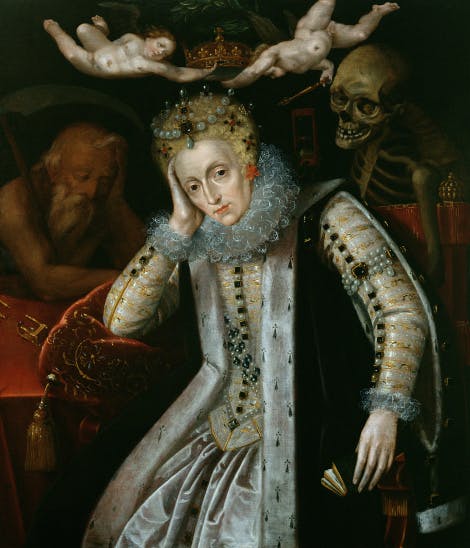
The Death of Elizabeth I
Elizabeth’s ‘Golden Speech’ to Parliament of 1601 may have protested that there was 'no prince that loves his subjects better' but the Arcadian paradise depicted in Elizabethan literature did not reflect the reality of Elizabeth’s England.
High taxes, bad harvests, unemployment, stagnant wages, inflation and crime created discontent, and Elizabeth’s popularity waned.
Elizabeth I died at Richmond Palace, after a short illness, in the early hours of 24 March 1603, aged 69.
Image: Queen Elizabeth I (1538-1603) in Old Age, c1610, English School. © Bridgeman Images
Funeral and Burial
Despite the problems of her last years, the chronicler John Stow reported at her funeral, 'There was such a general sighing, groaning and weeping as the like hath not been seen or known in the memory of man.'
Elizabeth was buried in Westminster Abbey, initially in the vault of her grandfather Henry VII.
With no other obvious candidate, James VI of Scotland, son of Mary, Queen of Scots, acceded to the English throne to rule as James I, joining the two kingdoms together.
In 1606, James I erected a monument to Elizabeth in the Abbey, and the Queen was reinterred beneath, in a vault shared with her half-sister Mary I.

Elizabeth the Survivor
Elizabeth I's early life defined her reign.
Her mother’s execution, her father’s tyranny, her brother’s revolutionary Protestantism and her sister’s reactionary Catholicism, taught her, above all else, how to survive.
This meant that Elizabeth the Queen avoided risk, sought compromise and carefully cultivated an image of herself as the protectress of a grateful nation. But was this true?
Image: Locket ring belonging to Queen Elizabeth I, c1575, English School, supposedly removed from the finger of the dead Queen and taken to James VI of Scotland to inform him of Elizabeth's death. © Bridgeman Images
Elizabeth I's Legacy
One of Elizabeth’s mottoes was 'I see but say nothing'. The Queen avoided controversy when she could. There is no record of her ever mentioning her mother, Anne Boleyn, in public.
Yet when she did speak, Elizabeth was an inspirational monarch, who – for the majority of her 44-year reign – commanded the loyalty of the ambitious men who ran her government.
The Elizabethan religious compromise helped spare England from the religious wars ravaging Europe; the stability instead nurtured a cultural renaissance and a burgeoning sense of national self-confidence.
But Elizabeth was a Tudor. Like her father Henry VIII, she could be arrogant and spiteful, and also maddeningly indecisive. After ordering the execution of Mary, Queen of Scots, her adoption of mourning clothes, and pretence that the decision had not been hers, was an act of self-pitying hypocrisy worthy of her father.
The last years of her reign were beset by disagreements in her council, economic decline in the country, and the riddle she had never been able to solve: how an unmarried queen could provide an heir.
Yet, as the country tore itself apart once again during the Civil War of the 1640s, many still alive to remember looked back with longing to the Elizabethan era of stability and domestic peace.

The Elizabethan 'Golden Age'?
In the centuries after her death, Elizabeth’s achievements have been recognised but also nostalgically inflated. The legend of Good Queen Bess, a virtuous ruler and heroic general became an unquestioned chapter of English history.
Indeed, whenever England has been threatened by foreign invasion, the spirit of Elizabeth I's defiance against the Spanish Armada is often invoked.
The Elizabethan age may not have been truly golden, but Elizabeth I’s importance and impact transcends her own era. Indeed the succession of her James VI and I, joined England and Scotland together.
Image: In the ‘Ditchley portrait’ by Marcus Gheeraerts, c1592, Elizabeth I towers above a map of England. Arguably, no other monarch in English history tied their identity so successfully to that of the nation itself. © National Portrait Gallery, London

Elizabeth I: History's Healthiest Monarch?
Fitness tips from the Tudor Queen
Elizabeth I was top of the Tudor tree when it came to health and fitness. Always a resourceful woman, she chased away ‘melancholy’ with a whole host of entertaining pursuits.
BROWSE MORE HISTORY AND STORIES
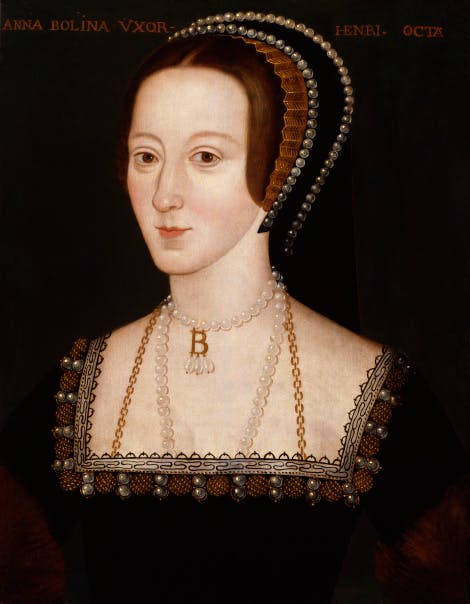
Anne Boleyn
How did Anne Boleyn become queen and why did Henry VIII execute her?
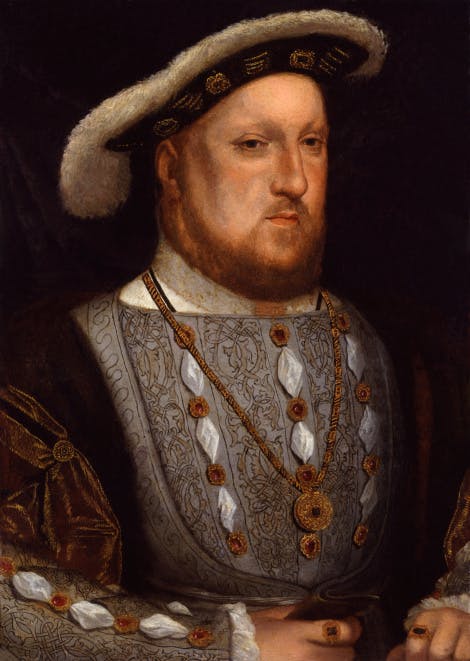
Henry VIII, Terrible Tudor?
Who was the real Henry VIII?

Henry VIII's children
All three ruled England
EXPLORE WHAT'S ON

- Things to see
Great Hall
Experience the splendour of the Tudor court in Henry VIII's Great Hall, complete with his magnificent tapestries.
- Open
- Hampton Court Palace
- Included in palace admission (members go free)

- Things to see
Great Watching Chamber
Discover Henry VIII’s State Apartments and the battle for power at the Tudor court in the Great Watching Chamber.
- Open
- Hampton Court Palace
- Included in palace admission (members go free)

- Things to see
Haunted Gallery and Processional Route
Walk Henry VIII’s route from his private apartments to the Chapel and see the infamous Haunted Gallery in the State Apartments.
- Open
- Hampton Court Palace
- Included in palace admission (members go free)
Shop online
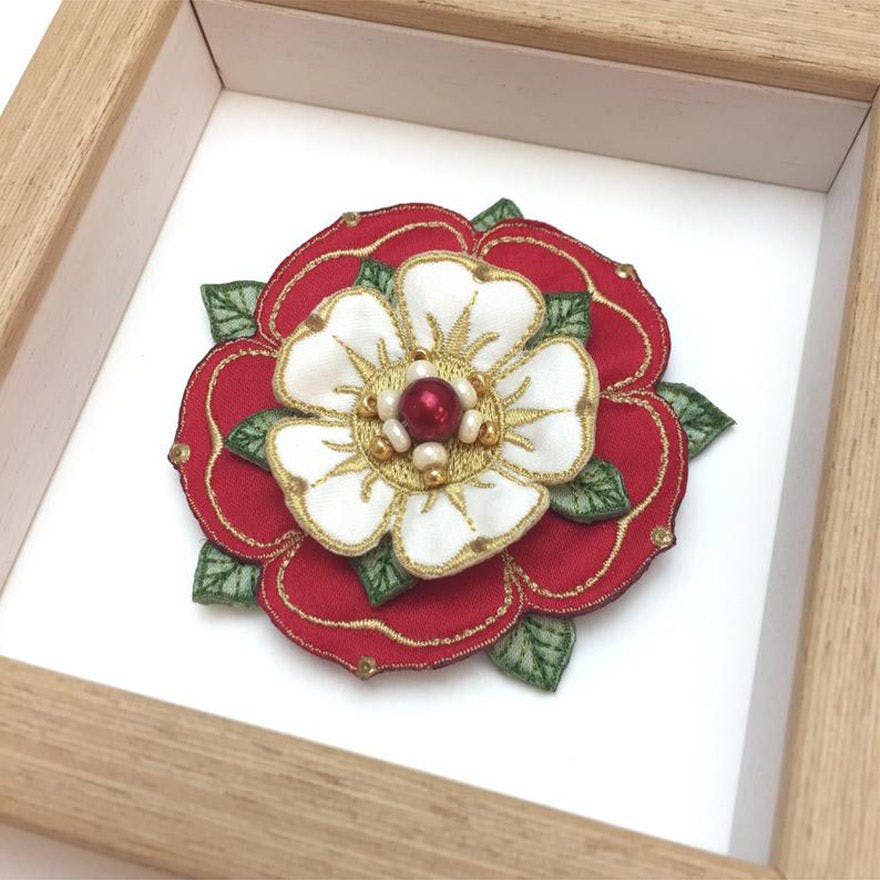
Shop Tudor gifts
Browse through our Tudor Collection to find a whole range of products based on the Tudors.
From £3.00
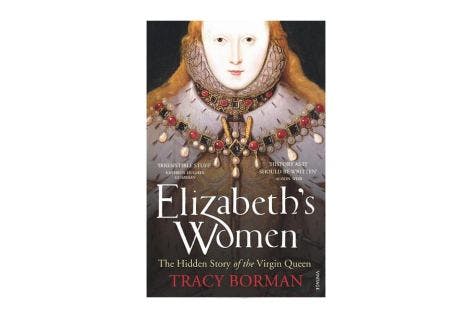
Elizabeth's Women by Tracy Borman
Discover the world of Elizabeth I with this insightful look at Elizabeth's relationship with woman and how they helped to shape her into a remarkable monarch. This thrilling book explores the lesser known side of Elizabeth I who is often portrayed as a ruthless 'man's woman'.
£16.99
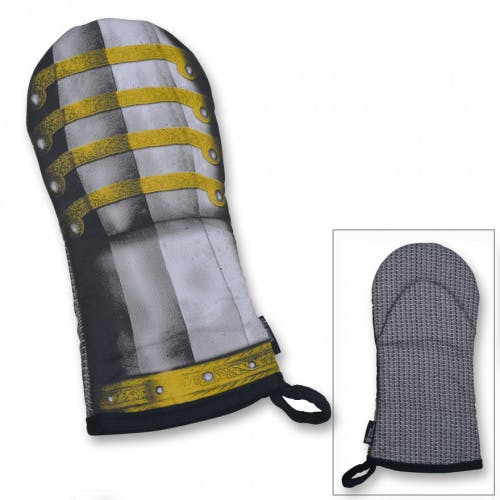
Henry VIII gauntlet armour oven glove
This fun oven glove has been inspired by a suit of armour made for Henry VIII in 1540, which is on display at the Tower of London.
£18.00

